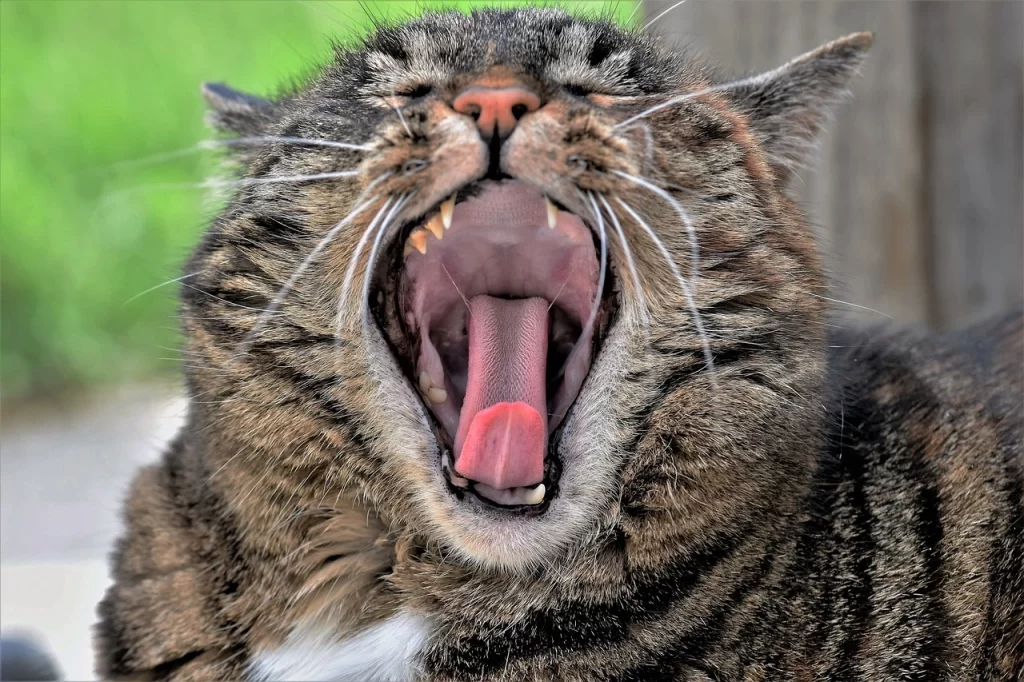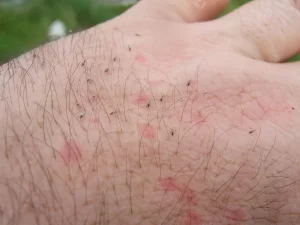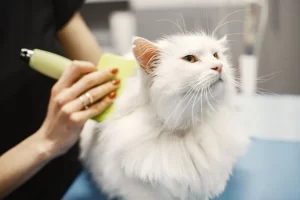Oral cancer is a devastating diagnosis for any cat owner. Unfortunately, oral cancer in cats is more common than we would like to think. Detecting oral cancer in cats early can be crucial for a better prognosis. There are different stages of oral cancer in cats, and understanding these stages can help pet owners and veterinarians develop appropriate treatment plans. In this article, we will discuss the stages of oral cancer in cats, how it is diagnosed, and what treatment options are available. It is important to note that early detection is key, and routine dental checkups and exams can aid in the early identification of oral cancer in cats.
Table of Contents
ToggleUnderstanding the Different Stages of Oral Cancer in Cats
Oral cancer in cats is a serious condition that can greatly impact the health and well-being of your furry companion. One of the most important aspects of managing this condition is understanding the different stages of oral cancer in cats. In this article, we’ll explore the different stages of oral cancer in cats, how it is diagnosed and staged, treatment options at each stage, and more.
Stage 1: Small, Localized Tumors
In the early stages of oral cancer in cats, the tumor is small, localized, and has not spread to other tissues or organs. At this stage, surgical removal of the tumor may be curative. This means that the cat may be able to live a healthy, cancer-free life after the tumor is removed.
Other treatment options for stage 1 oral cancer in cats may include radiation therapy or chemotherapy, depending on the size and location of the tumor. Your veterinarian may also recommend supportive care measures, such as pain management and nutritional support, to help your cat recover from surgery and manage any side effects of treatment.
Stage 2: Larger Tumors
In stage 2 oral cancer in cats, the tumor is larger than in stage 1 but is still localized and has not spread. Surgery is still a viable option, but other treatments such as radiation therapy may be required to manage the cancer.
Radiation therapy may be recommended to treat larger tumors or tumors that cannot be completely removed surgically. Chemotherapy may also be an option, particularly if the cancer has spread to nearby lymph nodes or other tissues.
Supportive care measures such as pain management, nutritional support, and dental care are also important for cats with stage 2 oral cancer.
Stage 3: Spread to Nearby Lymph Nodes
When oral cancer in cats reaches stage 3, the tumor has grown significantly and has spread to nearby lymph nodes. At this stage, surgery may still be an option, but radiation therapy and chemotherapy are more commonly used to manage the cancer.
Radiation therapy may be used to treat both the primary tumor and any affected lymph nodes. Chemotherapy may also be recommended to manage the cancer and prevent it from spreading to other parts of the body.
Supportive care measures are especially important at this stage, as cats with stage 3 oral cancer may experience pain, difficulty eating, and other side effects of treatment.
Stage 4: Spread to Other Parts of the Body
In stage 4 oral cancer in cats, the tumor has spread to other parts of the body, such as the lungs, bones, or other organs. At this stage, treatment is generally focused on relieving pain and improving the cat’s quality of life rather than attempting to cure the cancer.
Treatment options may include palliative radiation therapy to manage pain and improve breathing, as well as chemotherapy to slow the progression of the cancer. Supportive care measures such as pain management, nutritional support, and hospice care are also important for cats with stage 4 oral cancer.
It’s important to note that the progression of oral cancer can vary from cat to cat, and not all cats will follow this exact staging pattern. Additionally, early detection and treatment can improve the prognosis and increase the chances of a successful outcome.
Diagnosing and Staging Oral Cancer in Cats
Diagnosing and staging oral cancer in cats is a critical step in managing this condition. In this section, we’ll explore how oral cancer is diagnosed and staged in cats, including the different tests and procedures used by veterinarians.
If a tumor is suspected, your veterinarian may recommend a biopsy to confirm the diagnosis. During a biopsy, a small sample of tissue is removed from the tumor and examined under a microscope to determine if it is cancerous. Biopsies can be performed with local anesthesia, and in some cases, general anesthesia may be necessary.
In addition to a biopsy, your veterinarian may also recommend other diagnostic tests to determine the extent and location of the tumor. These tests may include:
- Radiographs (x-rays) to evaluate the size and location of the tumor
- Ultrasound to evaluate the extent of the tumor and assess for any spread to nearby lymph nodes or organs
- CT scan or MRI to provide a more detailed evaluation of the tumor and surrounding tissues
- Blood work to evaluate your cat’s overall health and check for any other underlying conditions that may affect treatment
Staging Oral Cancer in Cats
Once a diagnosis of oral cancer is confirmed, the tumor is then staged. Staging refers to the process of determining the extent and location of the cancer, which helps guide treatment decisions.
There are different staging systems used to stage oral cancer in cats, but one commonly used system is the TNM system. TNM stands for tumor, node, and metastasis, and it assesses the size and extent of the primary tumor (T), involvement of nearby lymph nodes (N), and whether the cancer has spread to other parts of the body (M).
Using the TNM system, oral cancer in cats can be staged from 0 to 4, with higher stages indicating a more advanced and widespread cancer. Once the tumor is staged, your veterinarian can recommend the most appropriate treatment options for your cat.
Treatment Options for Oral Cancer in Cats
Once oral cancer in cats is diagnosed and staged, treatment options can be considered. In this section, we’ll explore the different treatment options available for oral cancer in cats, including both medical and surgical interventions.
Surgical Treatment for Oral Cancer in Cats
Surgery is often the first line of treatment for oral cancer in cats, particularly in the early stages when the tumor is small and localized. During surgery, the tumor and any affected tissue is removed in an attempt to cure the cancer.
The extent of the surgery depends on the location and size of the tumor. In some cases, a small tumor may be removed with a minor surgical procedure. In other cases, more extensive surgery may be necessary to remove a larger tumor or affected tissue.
After surgery, your cat may need pain medication and antibiotics to help with healing and prevent infection. Your veterinarian may also recommend dental care, nutritional support, and other supportive care measures to help your cat recover.
Radiation Therapy for Oral Cancer in Cats
Radiation therapy may be recommended as a primary treatment for oral cancer in cats or as an adjunct to surgery. During radiation therapy, high-energy radiation is directed at the tumor to kill cancer cells and shrink the tumor.
Radiation therapy is often used to treat larger tumors or tumors that cannot be completely removed surgically. It may also be used to manage cancer that has spread to nearby lymph nodes or other tissues.
Chemotherapy for Oral Cancer in Cats
Chemotherapy may be recommended for oral cancer in cats, particularly if cancer has spread to nearby lymph nodes or other parts of the body. Chemotherapy involves the use of drugs to kill cancer cells and slow the progression of cancer.
Chemotherapy may be administered orally, intravenously, or through injection. Your veterinarian will determine the most appropriate chemotherapy protocol for your cat based on the type and stage of cancer.
Other Treatment Options for Oral Cancer in Cats
In addition to surgery, radiation therapy, and chemotherapy, there are other treatment options that may be considered for oral cancer in cats.
Immunotherapy is a type of treatment that uses the body’s immune system to fight cancer cells. This may involve the use of vaccines or other immune-stimulating agents to activate the immune system and attack cancer cells. While still considered an experimental treatment, immunotherapy has shown promise in the treatment of certain types of cancer in cats.
Palliative care may be recommended for cats with advanced oral cancer, particularly if curative treatment is not possible. Palliative care focuses on improving your cat’s quality of life and managing symptoms such as pain, difficulty eating, and discomfort. This may involve the use of pain medication, nutritional support, and other supportive care measures.
Alternative and complementary therapies such as acupuncture, herbal medicine, and homeopathy may also be considered as part of a comprehensive treatment plan for oral cancer in cats. While the effectiveness of these therapies in the treatment of cancer is still debated, they may help manage symptoms and improve your cat’s overall well-being.
Note that while there are many treatment options available for oral cancer in cats, the effectiveness of treatment may vary depending on the stage and type of cancer. Your veterinarian can help guide you through the treatment options and recommend the most appropriate course of action for your cat.
Prognosis and Survival Rates for Cats with Oral Cancer
The prognosis and survival rates for cats with oral cancer depend on several factors, including the type and stage of cancer, the location of the tumor, and the overall health of the cat.
Cats with early-stage oral cancer that is localized to a specific area of the mouth may have a better prognosis than cats with more advanced cancer that has spread to other parts of the body.
According to a study published in the Journal of the American Veterinary Medical Association, cats with oral squamous cell carcinoma (OSCC), the most common type of oral cancer in cats, have a median survival time of approximately six months without treatment. With treatment, including surgery and/or radiation therapy, survival times may be extended, with some cats living up to two years or longer.
Remember that every cat is unique, and survival rates can vary widely. Your veterinarian can provide more specific information on the prognosis and survival rates for your cat based on the type and stage of cancer.
Preventing Oral Cancer in Cats
While it’s not always possible to prevent oral cancer in cats, there are some steps you can take to reduce your cat’s risk of developing the disease.
Regular veterinary check-ups and dental cleanings can help detect early signs of oral cancer and other oral health problems. Your veterinarian may also recommend routine blood work and other diagnostic tests to monitor your cat’s overall health and detect any underlying health issues that may increase the risk of cancer. Read more on How often should I take my cat to the vet?
Feeding your cat a healthy, balanced diet and providing plenty of fresh water can also help support your cat’s overall health and immune function, which may help reduce the risk of cancer.
Avoiding exposure to known carcinogens, such as tobacco smoke, environmental toxins, and certain types of chemicals, may also help reduce the risk of cancer.
While it’s not always possible to prevent oral cancer in cats, taking these steps can help promote overall health and well-being, and may reduce the risk of developing cancer or other serious health problems.
Recognizing the Signs and Symptoms of Oral Cancer in Cats
Oral cancer in cats can be difficult to detect early on, but there are some common signs and symptoms that owners can look out for. Some of the most common signs of oral cancer in cats include bad breath, difficulty eating or swallowing, drooling, weight loss, and changes in the appearance of the gums or mouth. In some cases, cats may also develop sores or lumps in the mouth that do not heal, or they may show signs of bleeding or discharge from the mouth.
If you notice any of these signs or symptoms in your cat, it is important to take them to the vet for a full examination. Your vet may recommend diagnostic tests such as a biopsy or imaging to determine if your cat has oral cancer and, if so, what type and stage it is. Otherwise, he or she may suggest milder treatments like home remedies to treat some of these symptoms like mouth sores at home.
Frequently Asked Questions about Oral Cancer in Cats:
Early Detection and Treatment: Can Oral Cancer in Cats be Cured?
The prognosis for cats with oral cancer depends on a variety of factors, including the type and stage of the cancer, as well as the age and overall health of the cat. However, if oral cancer in cats is detected early, there is a much greater chance of successful treatment and potential cure.
Treatment options for oral cancer in cats may include surgery, radiation therapy, and chemotherapy. In some cases, a combination of these treatments may be recommended. It is important to discuss treatment options and potential outcomes with your vet in order to make an informed decision about the best course of action for your cat.
Understanding the Most Common Type of Oral Cancer in Cats
The most common type of oral cancer in cats is squamous cell carcinoma. This type of cancer arises from the cells that line the mouth and can occur in any part of the mouth, including the gums, tongue, and roof of the mouth.
Squamous cell carcinoma is an aggressive type of cancer that can spread quickly to other parts of the body. However, early detection and treatment can significantly improve the chances of a positive outcome.
Are Certain Breeds of Cats More Prone to Oral Cancer?
While oral cancer can occur in any breed of cat, some breeds may be more prone to developing this type of cancer. Siamese and Abyssinian cats, for example, may be more likely to develop oral cancer than other breeds.
It is important to note, however, that many factors can contribute to the development of oral cancer in cats, including age, overall health, and lifestyle factors such as exposure to second-hand smoke. Regular veterinary check-ups and early detection can help improve the chances of successful treatment.
Understanding the Risk Factors for Oral Cancer in Cats
There are several risk factors that may increase a cat’s likelihood of developing oral cancer. These include advanced age, exposure to second-hand smoke, poor dental hygiene, and chronic inflammation or infection in the mouth.
Regular dental care, including routine cleanings and check-ups, can help reduce the risk of oral cancer in cats. Additionally, avoiding exposure to second-hand smoke and other environmental toxins can help reduce the risk of cancer and other health problems in cats.
Can Oral Cancer in Cats Spread to Other Parts of the Body?
Oral cancer in cats, like other forms of cancer, can spread or metastasize to other parts of the body. If left untreated, oral cancer can spread to the lymph nodes, lungs, liver, and other organs. The risk of metastasis increases with the severity of the cancer, so it’s crucial to catch and treat oral cancer as early as possible.
Once oral cancer has spread, treatment options become more limited, and the prognosis for the cat becomes worse. Therefore, it’s crucial to keep an eye out for any signs of oral cancer in your cat and take them to the veterinarian for diagnosis and treatment promptly.
How Common is Oral Cancer in Cats?
Oral cancer is relatively common in cats, accounting for approximately 10% of all feline cancers. It is more common in older cats, with the average age of diagnosis being 10-12 years old. Certain breeds, such as Siamese and Abyssinians, may also have a higher risk of developing oral cancer.
How is Oral Cancer in Cats Treated, and What are the Potential Side Effects of Treatment?
The treatment for oral cancer in cats depends on the severity and stage of the cancer. Treatment options include surgery, radiation therapy, chemotherapy, and immunotherapy.
Surgery involves the removal of the tumor and any affected tissue around it. Radiation therapy uses high-energy X-rays to kill cancer cells and can be used alone or in combination with surgery. Chemotherapy involves the use of drugs to kill cancer cells, and immunotherapy uses the body’s immune system to fight the cancer.
Like with any cancer treatment, there may be potential side effects, including loss of appetite, vomiting, diarrhea, and fatigue. It’s essential to discuss potential side effects with your veterinarian and closely monitor your cat during treatment.
What is the Role of Palliative Care in Managing Oral Cancer in Cats?
Palliative care focuses on managing the symptoms of cancer and improving the quality of life for the cat. This can include pain management, nutritional support, and other therapies to alleviate any discomfort or pain associated with cancer.
Palliative care can be used alone or in combination with other treatments for oral cancer, depending on the severity of the cancer and the overall health of the cat. It’s crucial to work with your veterinarian to develop a plan for palliative care that best suits your cat’s needs.
What is the Likelihood of Recurrence of Oral Cancer in Cats After Treatment?
The likelihood of recurrence of oral cancer in cats after treatment depends on various factors, including the type of cancer, the stage of the cancer, and the treatment used. Some cats may experience complete remission, while others may experience a recurrence of the cancer.
Regular follow-up appointments with your veterinarian are essential after treatment to monitor for any signs of recurrence or new cancer development. If you notice any signs or symptoms of oral cancer, such as difficulty eating or changes in behavior, contact your veterinarian right away. Early detection and treatment can improve the cat’s prognosis and quality of life.
How often should cats with oral cancer be monitored by a veterinarian?
Regular monitoring is essential for cats diagnosed with oral cancer. The frequency of monitoring depends on the stage of the cancer and the treatment given. For cats undergoing treatment, they may require more frequent monitoring, while cats in remission may need to be monitored less frequently. Generally, cats should be monitored every three to six months to ensure the cancer does not return.
During these monitoring appointments, the veterinarian will examine the cat’s mouth, palpate the lymph nodes, and perform blood tests to check for any signs of cancer recurrence. Chest x-rays may also be taken to check for signs of cancer spread to the lungs.
What should I expect during a biopsy to diagnose oral cancer in my cat?
A biopsy is an important diagnostic tool for oral cancer in cats. The procedure involves taking a small tissue sample from the cat’s mouth for examination under a microscope. This can confirm the presence of cancer, identify the type of cancer and determine the stage.
Before the biopsy, the cat may be sedated or anesthetized to minimize discomfort. The veterinarian will then use a specialized tool to take the tissue sample from the affected area. The sample is then sent to a laboratory for analysis.
After the biopsy, the cat may experience some pain or swelling in the mouth. Pain medication and antibiotics may be prescribed to help manage any discomfort and prevent infection. It is essential to follow the veterinarian’s post-operative care instructions carefully.
What is the difference between squamous cell carcinoma and other types of oral cancer in cats?
Squamous cell carcinoma (SCC) is the most common type of oral cancer in cats, accounting for about 70% of cases. This cancer arises from the cells that line the mouth, tongue, and tonsils. Other types of oral cancer in cats include fibrosarcoma, osteosarcoma, and melanoma. These types of cancer can arise from the supporting tissues of the mouth, such as bone or muscle.
The symptoms and treatment options for each type of cancer may vary, and a definitive diagnosis is necessary to determine the appropriate treatment. SCC is typically treated with surgery, radiation therapy, or a combination of both, while other types of oral cancer may require different treatments such as chemotherapy.
How can I support my cat during and after treatment for oral cancer?
Cats with oral cancer may experience side effects from treatment, such as pain, nausea, and loss of appetite. As a pet owner, there are several ways you can support your cat during this time.
Firstly, it is important to follow the veterinarian’s instructions carefully regarding medications, diet, and aftercare. It is also essential to monitor your cat’s symptoms closely and report any changes or concerns to your veterinarian promptly.
Providing a comfortable and stress-free environment can also help your cat during treatment. This may include setting up a quiet and cozy space for your cat to rest and limiting interactions with other pets or visitors.
Feeding your cat a nutrient-dense and palatable diet is also crucial. Cats with oral cancer may experience difficulty eating or have altered taste preferences. Soft or pureed food can be easier for them to eat, and warming the food may help enhance its aroma and palatability.
Lastly, providing emotional support and spending quality time with your cat can help reduce their stress and anxiety during this challenging time (check out these home treatments for anxiety!).














